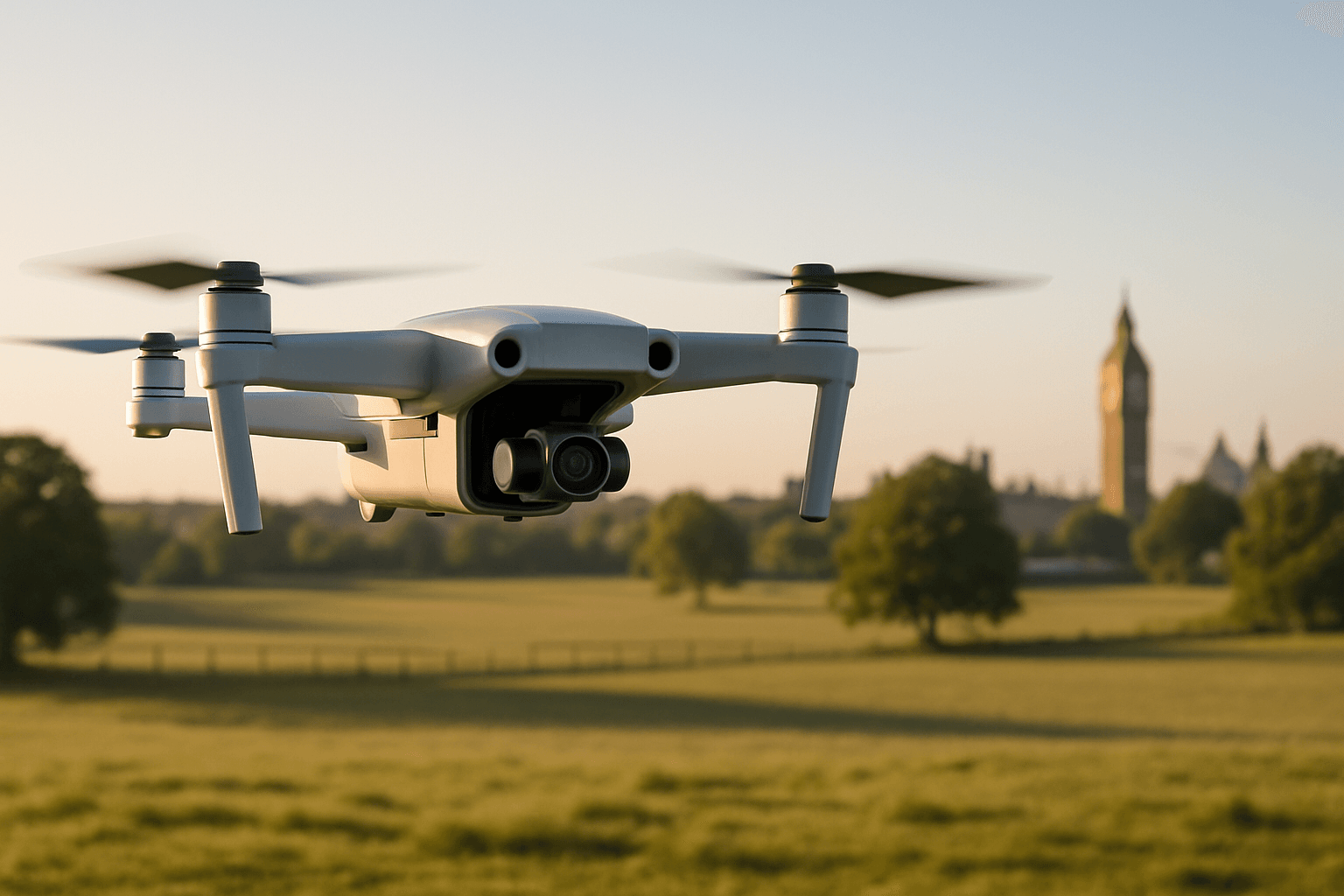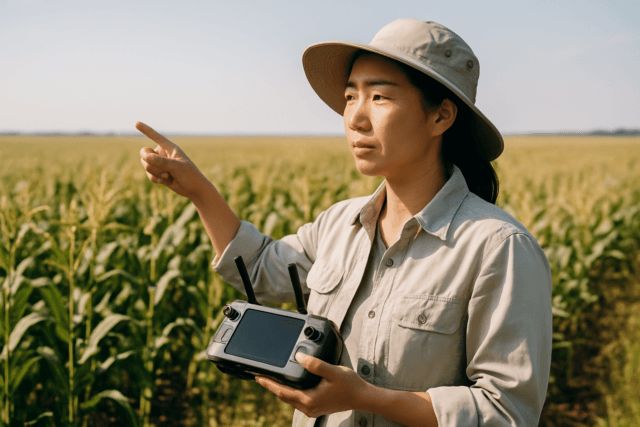Drones have become increasingly popular in the UK for recreational and commercial use. However, it’s crucial to understand and adhere to the drone safety regulations set forth by the UK Civil Aviation Authority (CAA) to ensure safe and legal flying. This guide provides an overview of the key drone laws and best practices in the UK as of May 2025.
Understanding UK Drone Regulations
The UK’s drone regulations are designed to balance public safety and security with the growth of the drone industry. These regulations are primarily based on the weight of the drone, where you intend to fly, and how close you will be to people and built-up areas.
Key Regulatory Bodies
- Civil Aviation Authority (CAA): The primary regulator for drone operations in the UK, responsible for creating and enforcing drone laws and guidelines.
- Market Surveillance Authority (MSA): From January 1, 2026, the CAA will also act as the MSA, ensuring that drones meet new product standards under the Class Marking framework.
Registration and Identification
- Operator ID: If you are responsible for a drone or model aircraft, you must register with the CAA for an operator ID if the drone weighs over 250g or has a camera that can take photos or record video. The fee for an Operator ID is £10.33 per year. You must be 18 or over to register for an Operator ID. The Operator ID must be displayed on every drone you own or manage.
- Flyer ID: Anyone intending to fly a drone that weighs over 250g must pass an online theory test and get a Flyer ID. Anyone under the age of 13 is still required to get a Flyer ID but must have someone over 18 with them to take the test. Your Flyer ID is valid for 5 years.
Drone Categories
The regulations differentiate between various categories based on the risk of operation:
- Open Category: For low-risk drone flights and leisure activities.
- The aircraft’s maximum take-off mass must be less than 25kg.
- Keep the drone within Visual Line of Sight (VLOS).
- Do not fly higher than 400 ft (120 metres) from the earth’s surface.
- Specific Category: For operations that present a higher risk and require an operational authorization from the CAA.
- Certified Category: Reserved for high-risk operations, such as transporting people or dangerous goods.
Open Category Subcategories
The Open Category is further divided into subcategories based on proximity to people:
- A1: Flying “over” people: Flights can only be conducted with drones with a Maximum Take-Off Mass (MTOM) of less than 250g. Flight overhead people (but not open-air assemblies) is allowed. Drones with a MTOM of 500g or less may be flown in A1 under ‘Transitional’ rules but may not be deliberately flown overhead people, and the pilot must hold an A2 CofC.
- A2: Flying “close to” people: Operations can only be conducted with a C2 Class drone or a ‘legacy’ drone with a MTOM under 2kg. Remote Pilots must hold an A2 Certificate of Competency. With a C2 drone, flight may be within 30m of uninvolved people and 5m in slow flight mode. Legacy drones may fly within 50m of uninvolved people.
- A3: Flying “far from” people: You should be well away from people and residential areas. Specifically, you should not fly in or near residential, commercial, industrial, or recreational areas, and keep at least 50 meters horizontal distance from any uninvolved people.
Key Safety Rules & Regulations
- Visual Line of Sight (VLOS): Always keep your drone in direct sight and have a full view of the surrounding airspace. You must be able to spot any hazards and avoid collisions.
- Maximum Altitude: Drones must not exceed 400 feet (120 meters) above the surface.
- Restricted Airspace: Permission is required before flying in restricted airspace (e.g., near government buildings, military bases).
- Airport No-Fly Zone: No flying within a 5-kilometer (3-mile) radius of airports.
- Distance from People: Keep at least 50 meters away from people not involved in the operation.
- Distance from Built-up Areas: Drones weighing 250g or more must remain 150 meters away from residential, commercial, or industrial zones.
- No-Fly Zones: Don’t fly over crowds or assemblies.
- Respect Privacy: Respect other people’s privacy, and know what you can and cannot do with photos and videos. Avoid flying over private properties or gardens without permission.
Transitional Period
A Transitional Period has been extended to January 1, 2026. This allows current drones – with no class marking or a class marking which is not recognised in the UK – to continue to be flown in line with more relaxed rules, as part of the drone regulations. However, on May 8, 2025, the UK CAA announced that it has proposed to extend the Transitional Period beyond the start of 2026 and is awaiting sign off from the Department for Transport.
EU Class Marks
UK CAA has said that European Union (EU) class marks on drones will not be recognised in the UK from December 23, 2022. However, on May 8, 2025, the UK CAA published proposals that could change much of the above – although it still needs to be ratified by the Department for Transport, so has not yet been set in stone. The UK CAA has proposed:
- Extending the Transitional Period beyond 2026.
- Allowing legacy drones to be used indefinitely under existing operational requirements, in most cases.
- Allowing EU class-marked UAS to operate in the Open Category, in the same subcategories as their UK equivalents, prior to January 1, 2028.
- Introducing UK-specific product marking for class-marked UAS, ie replacing the C0 label with UK0 and so forth.
Flying Safely
- Pre-Flight Checks: Follow the drone manufacturer’s instructions for pre-flight checks.
- Weather Conditions: Be aware of the weather conditions and avoid flying in strong winds or rain.
- Obstacles: Try to find a wide open field without trees, buildings, cars, towers, and other possible hazards.
- Power Lines: Make sure you always fly more than 50 metres from electricity substations and overhead power lines.
- Emergency Procedures: Be ready in case something should go wrong with your drone.
- Software and Firmware Updates: Keep your drone’s software and firmware updated.
Where to Fly
- Publicly Accessible Lands: One of the safest places to fly a drone is on publicly accessible lands, such as those covered by the Countryside and Rights of Way (CRoW) Act.
- Avoid Sensitive Areas: Never fly near airports, schools, churches, stadiums, power stations, prisons and detention centres, and busy roads.
Resources and Training
- CAA Website: Register your drone and access the Drone and Model Aircraft Code.
- Drone Safe App: Use the Drone Assist app from NATS, the UK’s main air traffic control provider.
- Drone Schools: Consider enrolling in a drone training course to learn about the rules and regulations for flying drones safely.
- A2 Certificate of Competency (A2 CofC): This certification allows pilots to fly small drones up to 2kg “close to people”, maintaining a 50m horizontal separation distance from uninvolved people. This certification involves online theoretical training and an online test, making it essential for operating in more restricted environments.
- General Visual Line of Sight Certificate (GVC): The GVC is a necessary certification to apply to do operations in the Specific Category, enabling you to legally and safely operate drones up to 25 kg in built-up areas.
Consequences of Non-Compliance
Failure to fly responsibly could result in a criminal prosecution. Endangering an aircraft is a criminal offence with a five-year prison sentence. Fines can be issued for unsafe operations. As of December 1, 2019, anyone operating a drone that cannot prove they have registered and/or passed the online course will be considered breaking the law. The maximum fine is £2,000.
Conclusion
Staying informed about and compliant with UK drone regulations is vital for ensuring safe and responsible flying. As the drone industry evolves, it is essential to keep up-to-date with the latest rules and guidelines provided by the CAA. By following these regulations and best practices, drone pilots can enjoy the benefits of drone technology while minimizing risks and respecting the safety and privacy of others.





